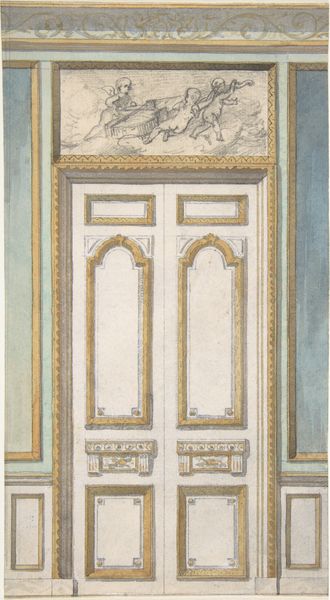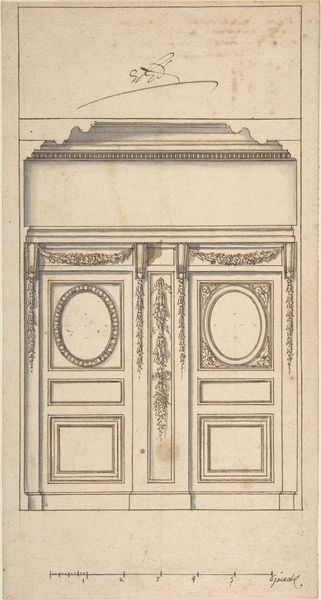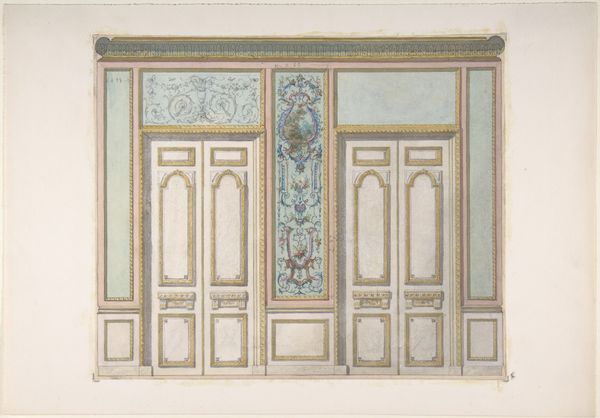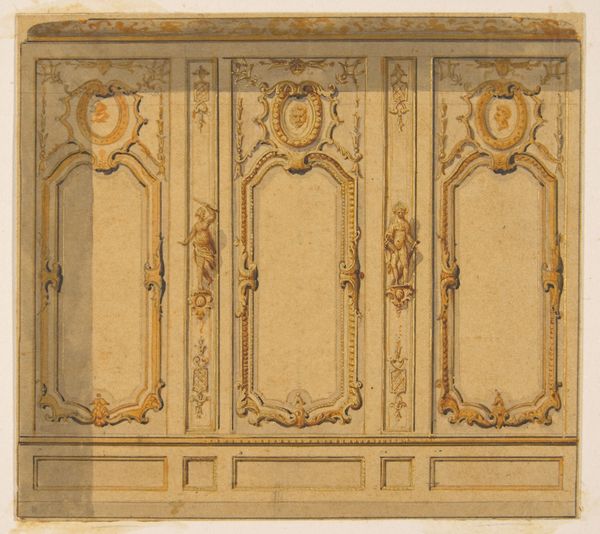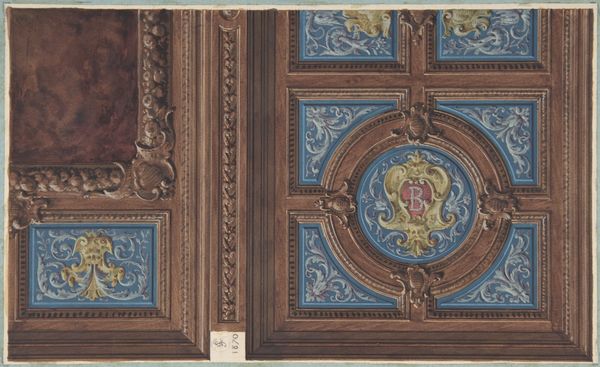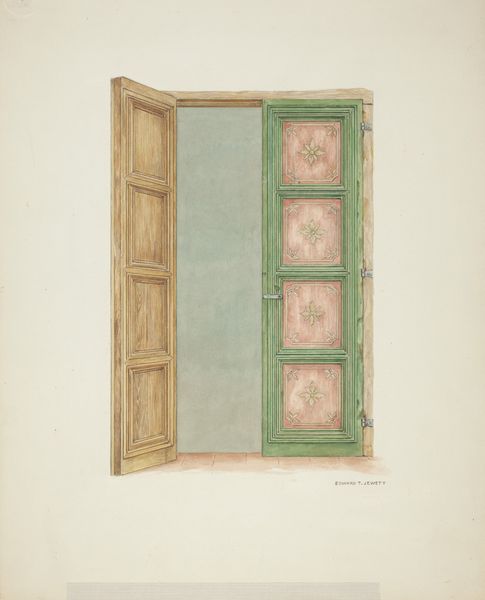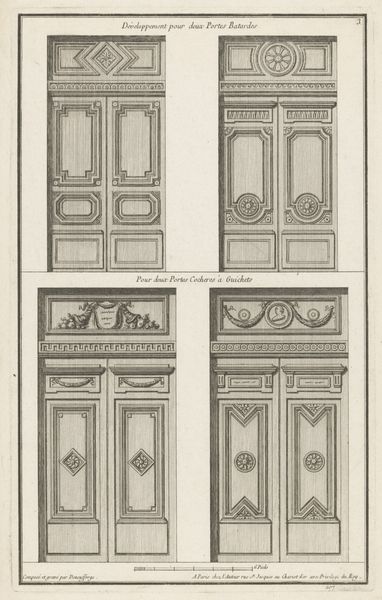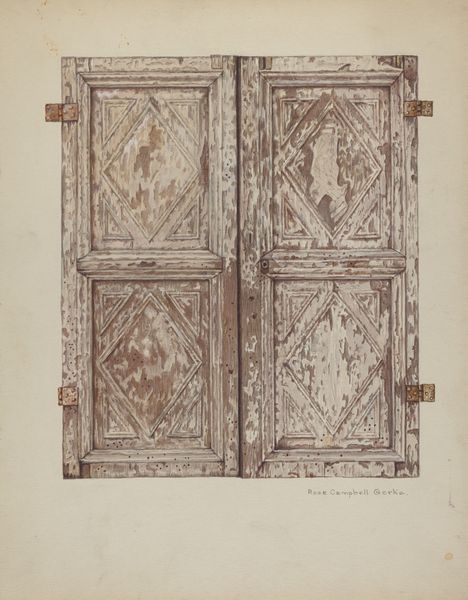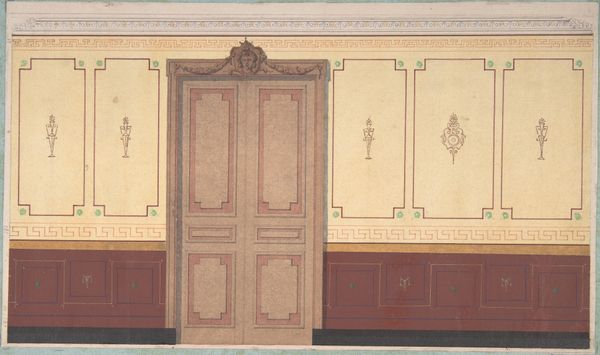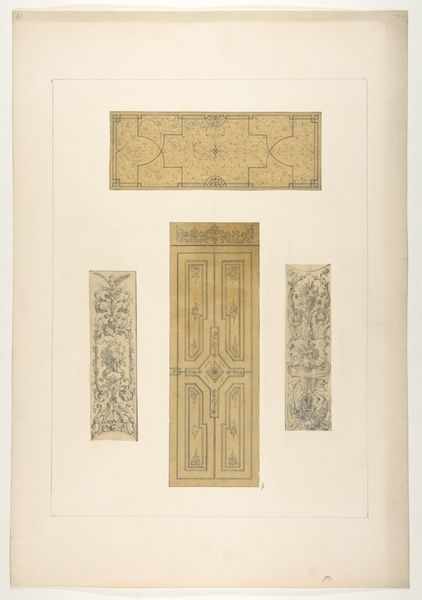
Two Designs for Doorways with Alternate Overdoor Decoration 1850 - 1900
0:00
0:00
Dimensions: Both designs 8 3/4 x 4 3/4 in. (22.2 x 12.1 cm)
Copyright: Public Domain
Editor: We’re looking at “Two Designs for Doorways with Alternate Overdoor Decoration,” a drawing, or perhaps a print, made by Jules-Edmond-Charles Lachaise sometime between 1850 and 1900. It depicts exactly what the title says: two doorway designs. The ornamentation is really catching my eye. What’s your take? How do we unpack the cultural significance of something that seems so…architectural? Curator: Well, let’s start with what these doorways *represent*. Think about it: a doorway isn’t just a functional feature; it’s a threshold, a marker of transition and status. In the 19th century, and particularly with these Neoclassical motifs, it's about conveying ideals of order, reason, and even civic virtue, reflecting back to classical antiquity. Consider where such doorways would have been placed: in public buildings, in homes of the wealthy, projecting particular values. Where might you expect to see such designs used, and what would that communicate to the public? Editor: So it’s less about the practicality of a doorway, and more about the image that it is meant to project? Thinking about these designs being used in public buildings makes sense. Their very design speaks of authority. Curator: Precisely! The placement is crucial to understanding the 'why' of the design. Note, too, how prints and drawings like these circulated architectural ideas. They played a key role in shaping aesthetic tastes and reinforcing specific cultural values linked to neoclassicism beyond just buildings themselves. Were these designs influential or outliers, and who were they meant to influence? What does it say about society? Editor: That’s fascinating, that something like an architectural drawing could play such a powerful role in disseminating ideology! I came into this thinking about lines and shapes, but I am leaving thinking about the messages embedded in the design and who controlled their dissemination! Curator: Exactly, by thinking about audience and place we change the whole way that we interpret the design. Now, does this prompt further thoughts about what we are seeing? Editor: Definitely! Now I see the design, but the context defines its purpose.
Comments
No comments
Be the first to comment and join the conversation on the ultimate creative platform.
